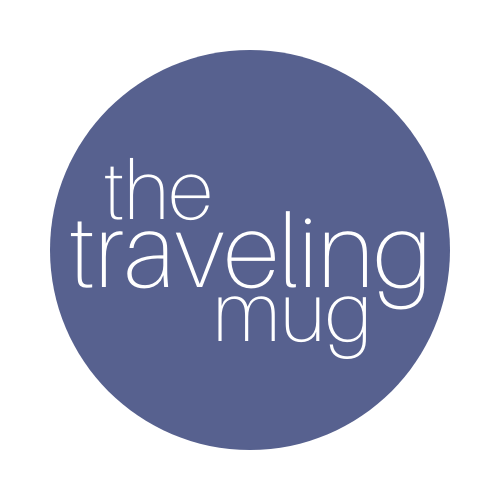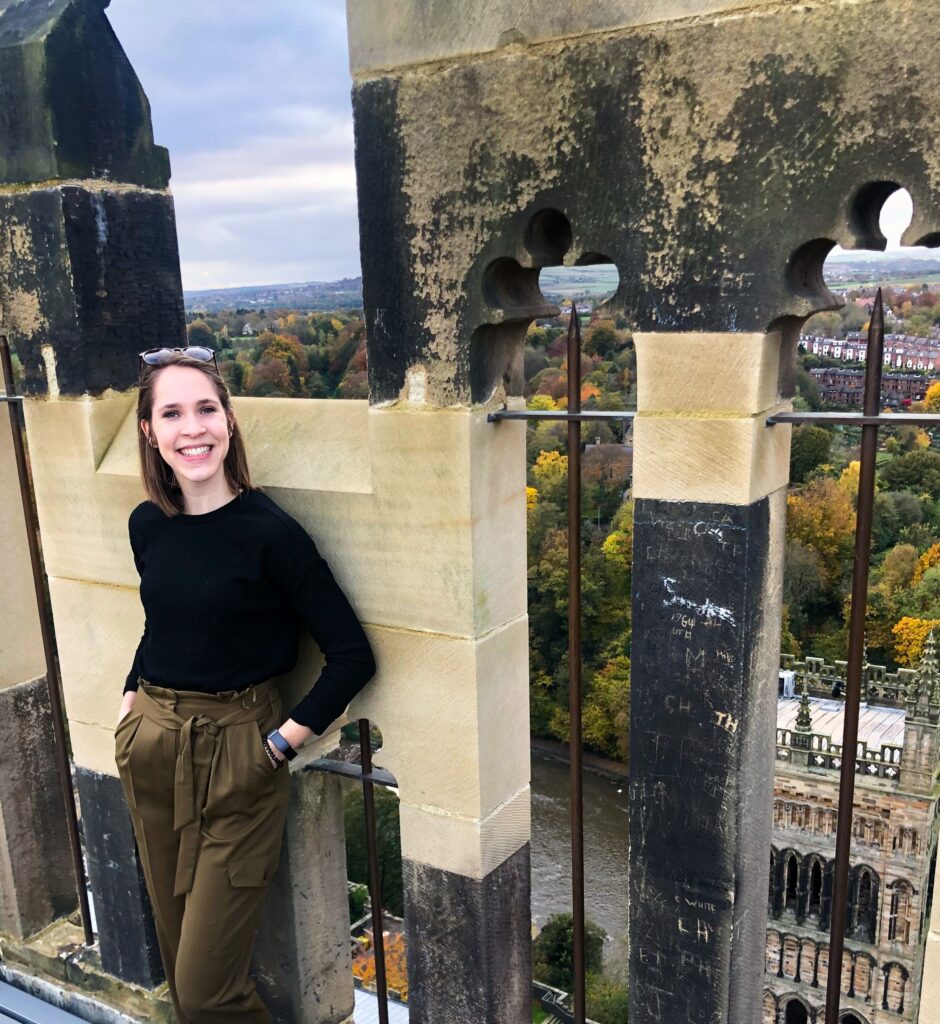Tucked away near a timber yard right outside of the main area of Ouseburn sits Kiln, an independent coffee house that doubles as a ceramics studio. The cafe sells ceramics to multiple Michelin star restaurants, but customers can also buy individual mugs, bowls, or plates in the cafe. With long wooden tables, dim lighting, and soft indie hits playing in the background, Kiln takes on a unique vibe as each plate of food or cup of coffee served there comes out on a ceramic that was made in-house.
While Kiln is now a successful business that has been in operation for four years, owner Rich Cullen says the road to create Kiln was not a smooth or straightforward one.
Rich is an early thirty-somethings man with bushy brown hair and a thoughtful speech pattern as he talks. As we sit in the back of the cafe, Rich holds two mugs of coffee in one hand.
As we talk, Rich moves through the long process that it took for him to reach the point he is at currently. He said the original plan was never to ultimately open a cafe that also served as a studio, but he had always wanted to simply run his own ceramics studio. However, he’d also always had a deep love of coffee. Throughout the years, he found the two slowly melting together.
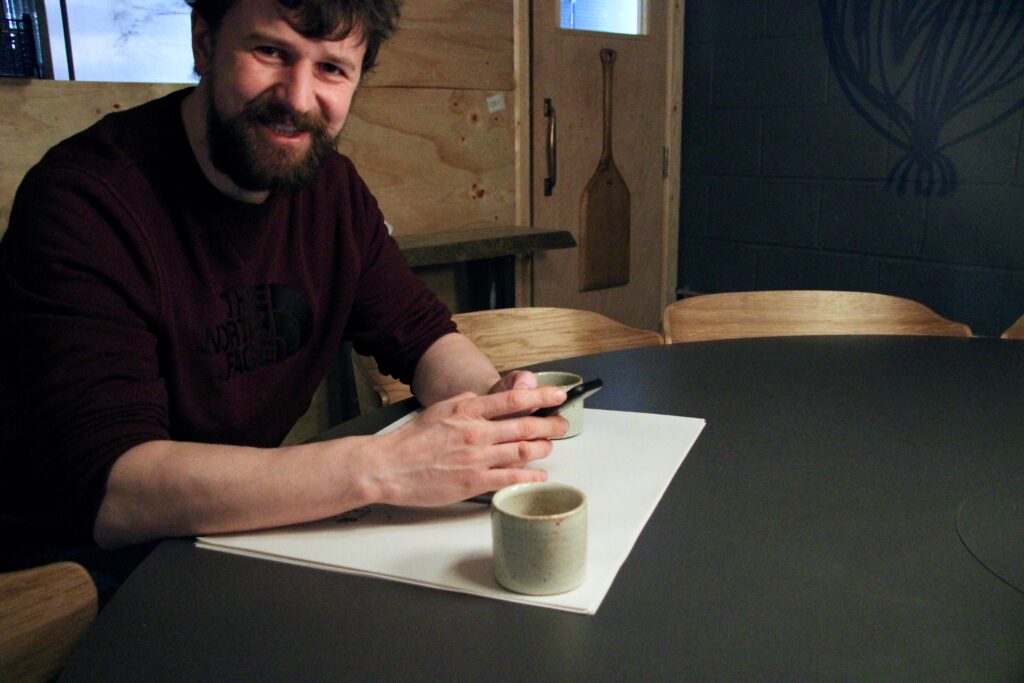
Rich stated that it was never his original plan to combine a cafe and pottery studio. It was something that occurred to him naturally over the years.
Starting A Pottery Studio
Gaining a fine arts degree while at university, Rich commented he felt slightly unprepared for life after uni because most of his art degree had focused on theory and didn’t include much practical application.
Rich commented “when I was at university, I noticed that there was a big part of the university that seems to deal with the aesthetic qualities of what a career after university looks like. There was that idea of what professional practice might be like in the wild after university, and I didn’t feel like it actually dealt with how you actually got opportunities after uni.”
After graduation, Rich decided to look for any available position that would help pay the bills even if it wasn’t involved in fine art. He began a graduate scheme as a postman at the Royal Mail, and he was made into a manager there. Rich was in charge of about 60 people, and, despite his degree in fine arts, his role mainly involved focusing on logistics for post deliveries.
As Rich held the manager position, he continued to look for a creative outlet.
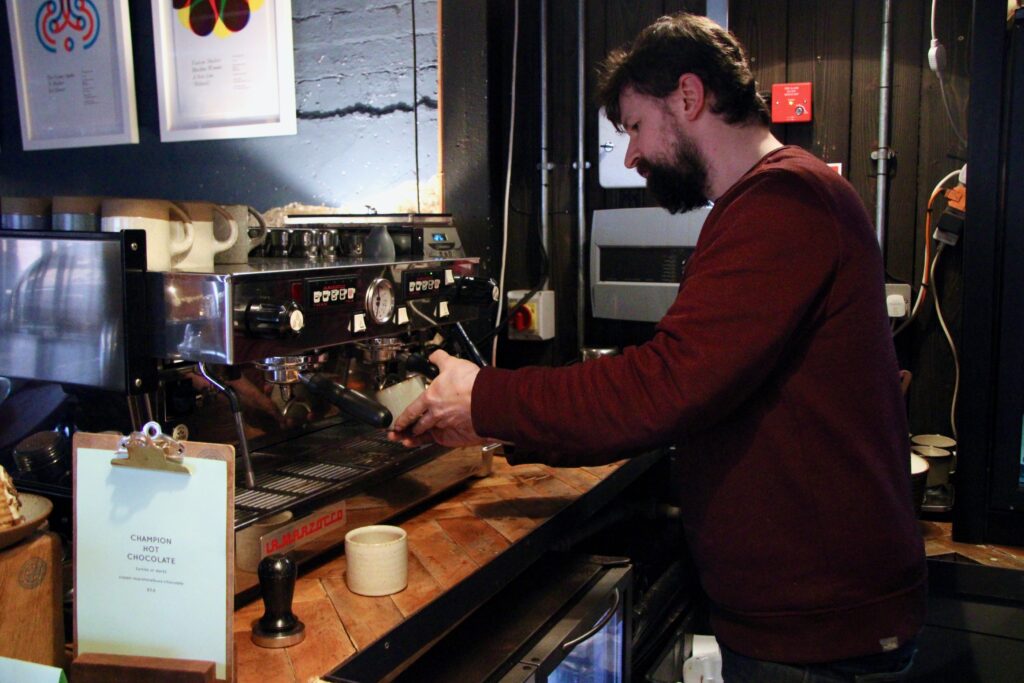
Rich preps a couple cups of coffee prior to our interview.
“If I was going to get a job where it didn’t bear any consequences towards the degree that I just spent the past three years doing, I needed a symbol to sort of put my flag in the ground that I was going to come back to it. And so maintaining a studio of any description was an important element of that.”
Rich and one of his high school friends, Joel, decided to go in on a studio together. Both had taken a ceramics night class while at uni. However, the pair lacked a kiln, so much of their time was spent throwing ceramics on a potter’s wheel. They’d then smash up the finished product and recycle the clay. Rich commented this whole process was very unfilling as a potter since he never saw the finished product, but it made for great practice on the potter’s wheel.
Even after the pair bought a kiln, Rich didn’t always get to see that much of the finished product because the kiln tended to be inconsistent.
“It either didn’t fire to the right temperature and it was a complete waste of time,” Rich said with a smirk while he recalled the moment. “Or it exploded.”
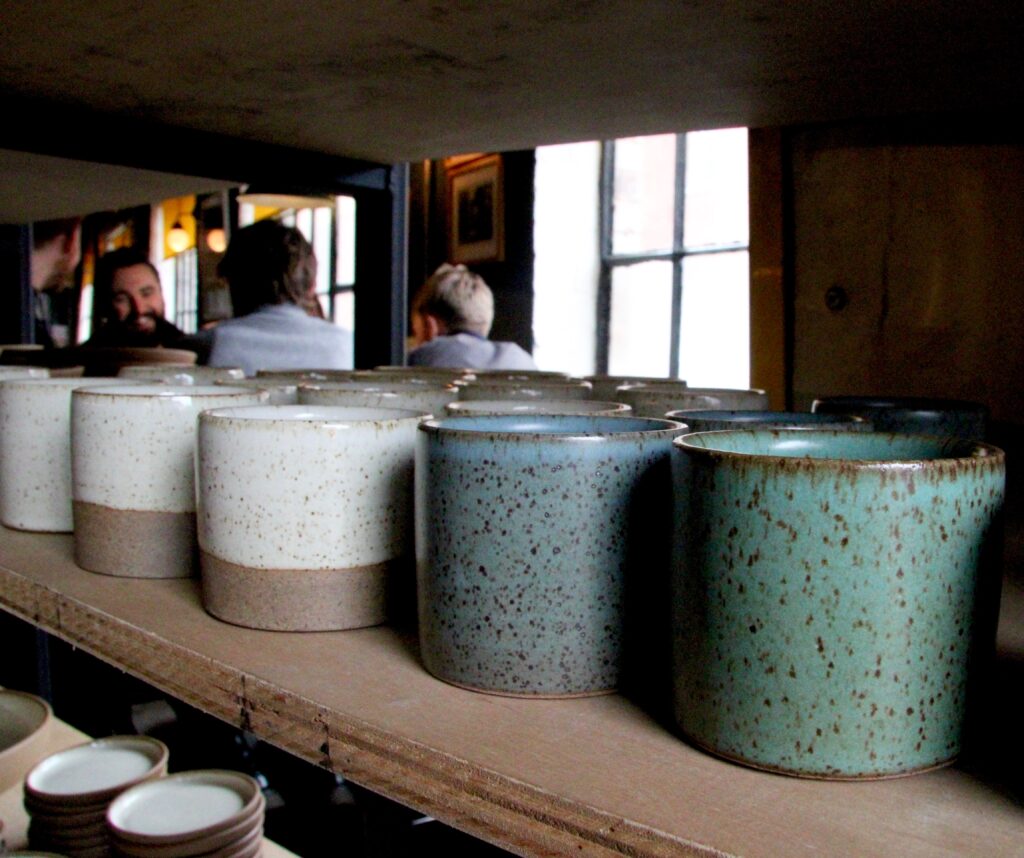
As soon as you walk through the door of Kiln you're surrounded by ceramics that have been created in Kiln's pottery studio at the back of the cafe.
Eventually Joel and Rich headed in different directions. Rich continued to work as a postman, but he opened another studio in Northumberland. With this shift came another important change- the type of kiln Rich was using to fire his ceramics.
The previous kiln Rich was operating was the size of your average microwave. The newer kiln? Larger than a whole room. Rich estimates that the kiln was five meters squared.
“So there are two types of kilns. Electric ones and gas ones. With the gas kilns, you can do weird wonderful stuff that makes chemical reactions and makes stuff look great,” Rich stated.
However, there were a lot of obstacles with the new kiln Rich had acquired. While he bought it for a relatively cheap price, the kiln used about £50 of gas each time it was fired. The average firing time also tended to take 16 hours or more. And Rich couldn’t leave the whole time while firing it.
“You know, you had to just tamper a little bit, tighten the screw there. You have to turn that bit of pressure up there. Open the chimney, close the chimney. And we were phemonially shit at doing it,” Rich laughed.
Despite Rich’s assessment of his ceramic skills at the time, he was managing to sell ceramics to Michelin star restaurants. At these meetings, he would take in a piece of pottery and discuss the essence and value of the ceramic bowl in his hand. He would argue that humans can connect with a unique, one-of-a-kind piece of pottery better than mass-produced dishes, and this would help improve the aesthetic of the meal.
Rich claims that his overall appearance at the time also helped him convince restaurant owners of his authenticity.
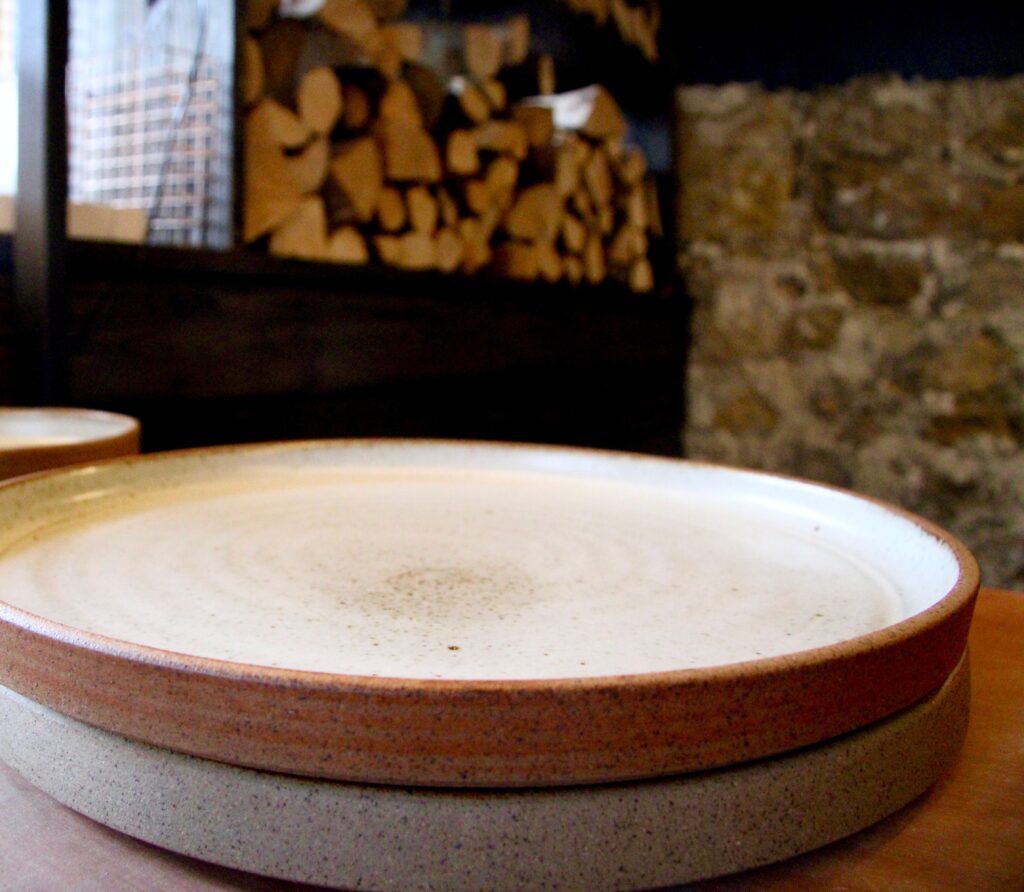
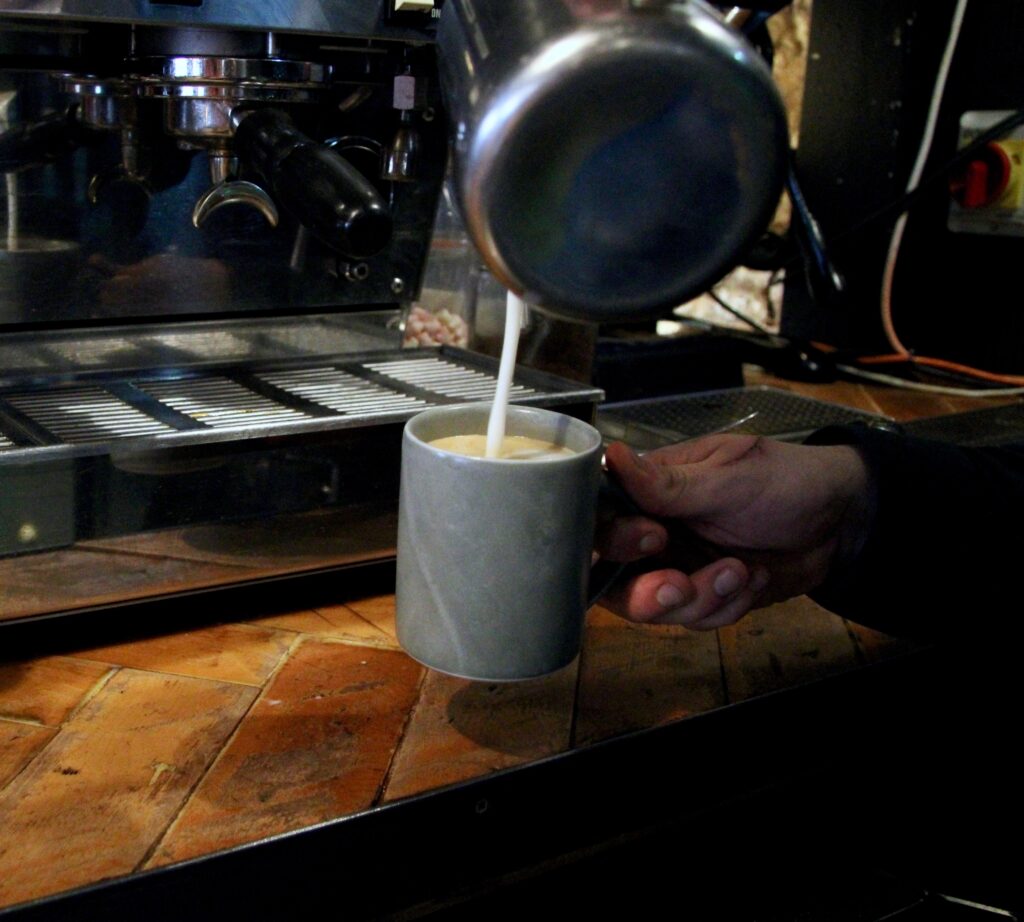
“So I would go into these Michelin star restaurants covered in clay with flip flops on. And there is something about that that seems to be believable, you know, and it was like, in that I was a bit of an impoverished craftsman in some respects,” Rich said. “But I also wasn’t at all. I’d gone to university, grown up in a nice town in Northumberland. It was a sort of choice I’d made. So, you know, when it came to like, who was I? What was my identity? I didn’t have a clue.”
Despite Rich’s lack of a set identity, he managed to land multiple contracts with these high quality restaurants. Unfortunately, due to the length of time it took to fire a group of ceramics, he began to fall behind on some of his orders. He’d also been firing his large kiln out of a barn on Highbridge. Not long after an unfortunate incident where he and two other potters almost passed out from carbon monoxide poisoning, the owner of the barn decided he wanted to remodel it.
“That decision probably ended up saving my life,” Rich said while smirking.
Spending Too Much Time At Cafes
Throughout the time that Rich was trying to create a successful ceramic business, if he wasn’t at work or the studio, he was at a coffee shop. According to Rich, there were times where he spent more time at coffee shops than he did at his pottery studio.
“It’s a great space for meeting new people and collaborating and being creative, where the space itself isn’t that creative you know? Often creative spaces like studios limit creativity more. Because they set a defined narrative of what that creativity should be. Or the narrative is that you’re in a creative space, so therefore you must be creative,” Rich said. “Whereas that’s just not how it works in my mind. Creative is, you have to create a point of departure where that creativity can then sort of sprout from and it’s much easier to do that in an environment where there is no pressure to do that.”
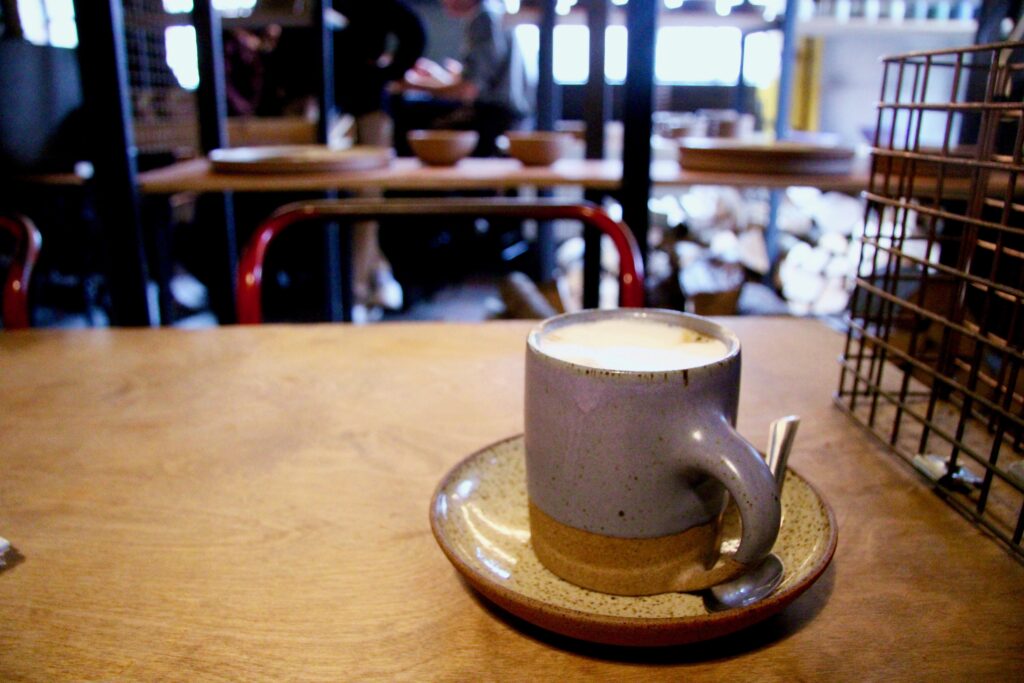
At Kiln, every cup of coffee you order comes out in one of their hand made mugs.
Around the time when Rich was working out of the pottery studio on Highbridge, he had begun to frequente a particular coffee shop named Intermezzo. Closed now, Rich commented that it wasn’t his favorite coffee shop due to a serious kind of Italian coffee that they served, but Rich found himself returning there time and time again because of the phenomenal community that both the baristas and the regular customers created. Eventually Rich decided it made sense to create a combination of a coffee house and a pottery studio.
“I thought, you know, I do the studio and then I sit in the coffee shop and I sit in a coffee shop and then I go to the studio. And I’m sort of semi-productive there and semi-productive there. Well, what if I just get them and smash the two together and see if anybody wants to join me in that.”
Discovering Kiln
After Rich had left his pottery studio on Highbridge, he was looking for the next spot where he could start again. He found himself being pulled to the Ouseburn area because of its creative atmosphere and because it was right outside of the bustle of the city centre.
It was also the part of town where he had taken his first ceramics class years earlier.
“I was just driving my car around for like two weeks and it was half past 11 one night, and I just parked my car across the road from where we are now,” Rich said. “ All the windows were bricked up and it was covered in graffiti and it was a shithole next to a timberyard. And I was just like, ‘hang on. Like this seems like a good place.’”
From there, everything didn’t fall into place immediately for Rich with turning Kiln into a growing business. He’ll readily admit that he still had a lot of learning to do with how to run a business. One time, he mispacked a whole van of ceramics for an order that had to go to the Isle of the Skye. He claimed that he didn’t excel at accounts for his ceramics despite working in logistics at the postal warehouse. He didn’t always call customers back right away if an order was behind schedule.
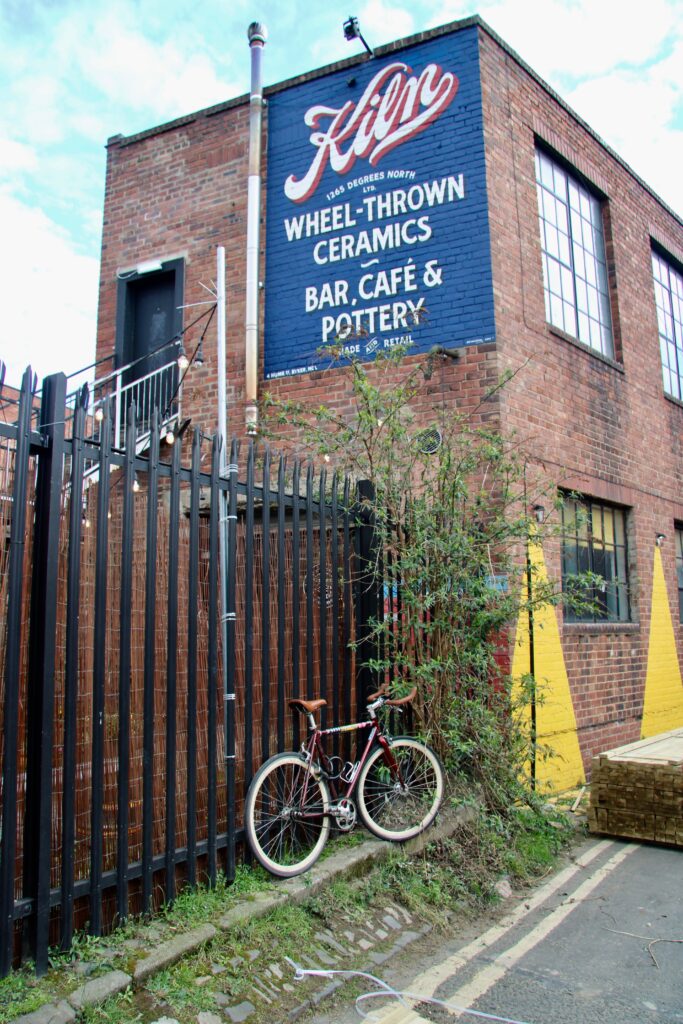
Kiln sits right outside of the main section of Ouseburn across from a timberyard. When Rich first found it, the building was a diamond in the rough.
Yet, Rich states that each of those things provided crucial learning moments that helped him turn Kiln into the business it is today. Those moments also helped him learn how to rely on other people.
Rich commented that he has had to change a massive amount over the past four years. He said in the beginning he struggled to understand why every employee wasn’t 110% as invested in the business as he was, but now he’s learned to step back. He strives to make Kiln the kind of place that people want to work at and be at, instead of it having the “normal” reputation of a restaurant kitchen where people aren’t treated extremely well.
Rich has also stepped away from creating the pottery or the coffee. He says that he’s found people who do it better than him and he’s more than content to let them run the show.
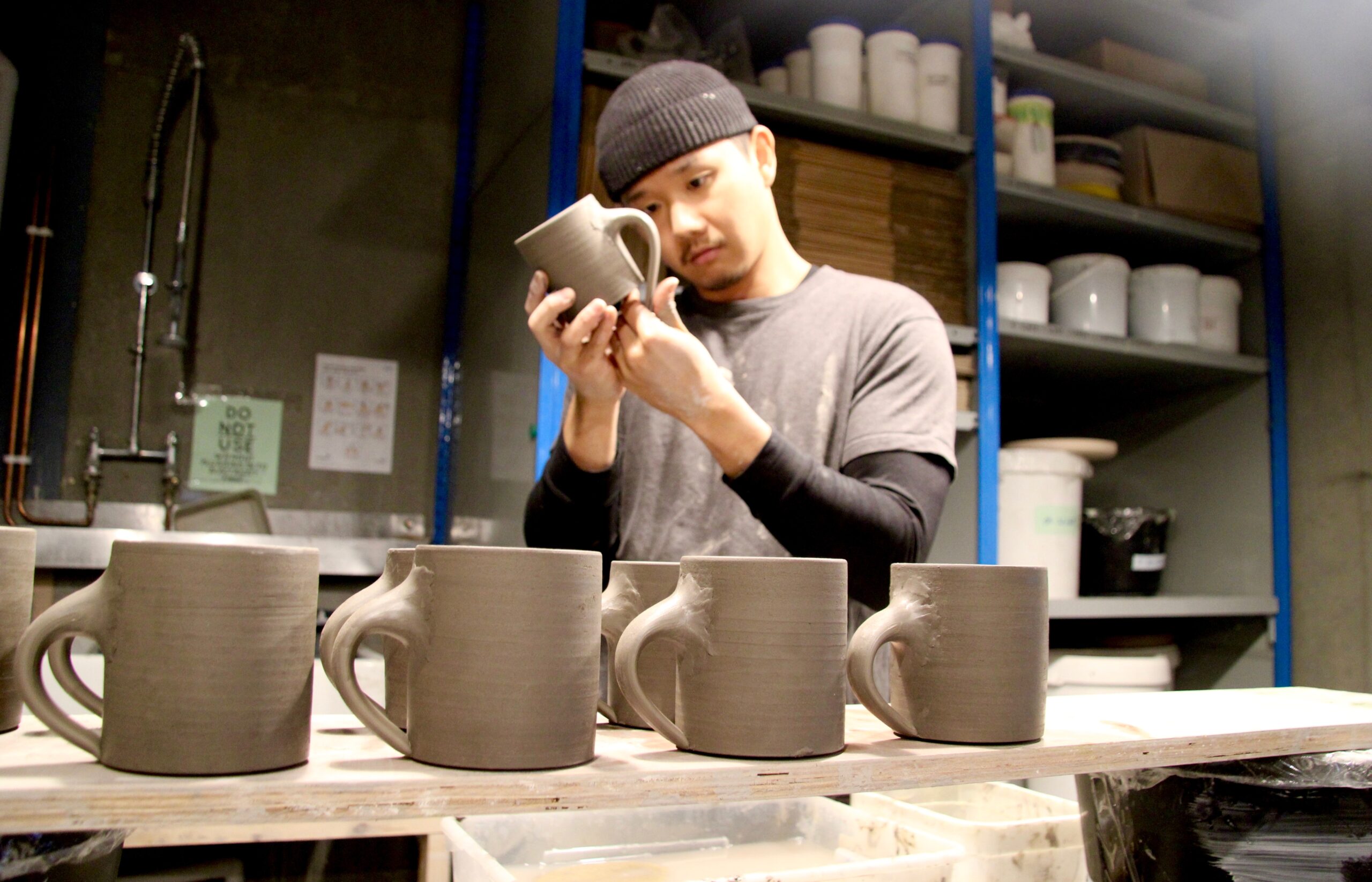
In the pottery studio, Jun creates an order of mugs. Jun is the main ceramics artist at Kiln now.
“All ideas worth pursuing that I’ve been exposed to, it seems it always grows beyond the person that originally does it. So Kiln has grown beyond me. And the pottery has grown beyond me. The most limiting factor is often the founder or the person who originally came up with the idea not getting past their own ego and letting go and letting other people do the job better than they can. And the people that work on it out there in the cafe do it better than I do, you know. And Jun makes the ceramics better than I do. So why would I try and push my way back in and try to do that? I need to now focus on what the next thing for me is. It’s important to know that the people around you are better and you gotta trust that they can do it without you.”
The United Kingdom's Lockdown & The Virus
I originally met with Rich on March 10, about a week before Britain began putting lockdown measures in place to slow the spread of the coronavirus. I visited the cafe again the following Thursday. The atmosphere in the space could not have been more different.
Normally when I visited Kiln, I struggled to find a place to sit because it was so busy. On that Thursday, there was only one group of three playing cards at one of the many long wooden tables.
I sat with Rich, one of the other co-owners, and one of the main cooks. At the time, they were game-planning how Kiln was going to survive through this time period. The three of them were thinking that Kiln would create take away meals that included a wide variety of cinnamon rolls and each kind of cinnamon roll would come from a different country or culture.
The following day, Boris Johnson announced the shutdown of all restaurants, pubs, and cafes across the United Kingdom. Coincidentally, when the announcement was made, I was once again in Kiln with a couple of friends as we were having a going away party for one of our classmates.
Rich ultimately decided to shut Kiln completely for the foreseeable future. He decided that if the delivery service couldn’t be done to the same level of quality that Kiln’s normal meals were served, then the take away service really wasn’t worth doing.
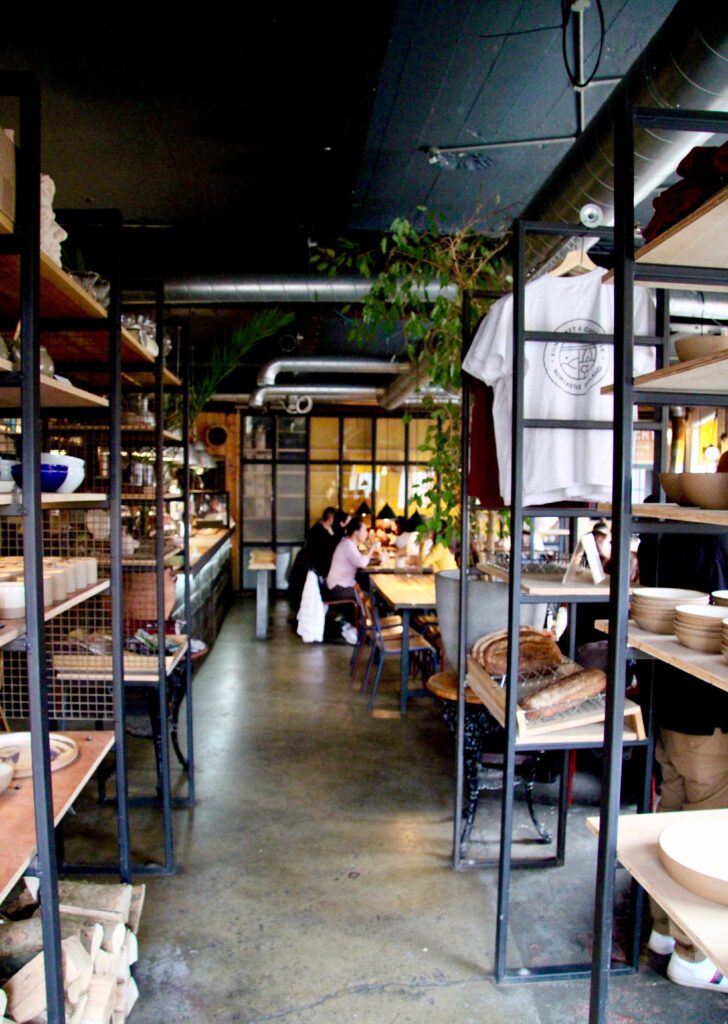
For Rich, Kiln encapsulates the community of people who come together in the space. Delivery meals wouldn't be the same, and he didn't feel he could provide the same level of quality.
In a post for Kiln on Instagram, Rich wrote, “take some time out. Have a think. It was only a week ago I was going to run takeaway, do ready meals, veg boxes and all sorts of other things. Speaking just for Kiln I thought it was going to be super difficult to do it well and do it safely.”
Rich continues by saying, “Kiln is about the space, and the food is just a part of that. If I put it in a box then I won’t be giving you Kiln. Thank you to all the team, customers, and family that bring Kiln together on a daily basis. Take this time to enjoy what’s important… you guys!!!”
Visiting Kiln and grabbing a cup of coffee there has become a staple in my life just as everything else was becoming more and more uncertain. Like many others, I’m looking forward to when the lockdown is over and I can be a part of the Kiln community once again.
In this podcast, Rich provides some additional advice for aspiring artists who are looking to take an "unconventional" path.
